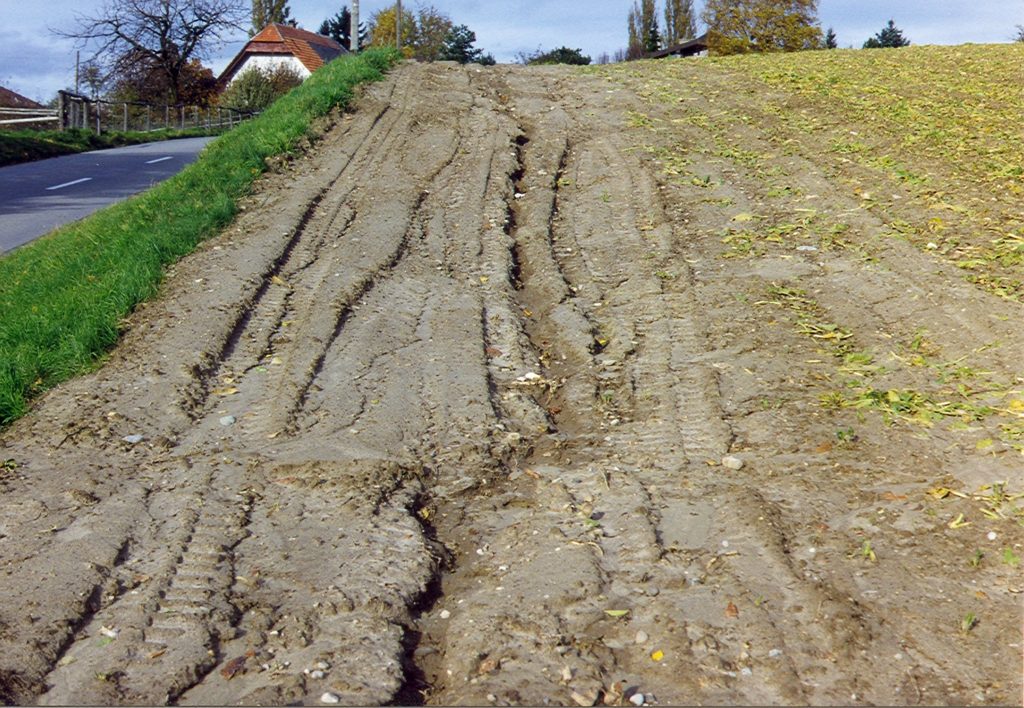Soil compaction is a process in which soil aggregates are pressed together by external forces. Excessive compaction often leads to poor soil filtration, and a reduction in pore space size. This directly impacts the health of trees and their root systems, impeding their ability to grow. The following describes some of the most effective methods for preventing and alleviating soil compaction.
Avoid Operating on Soil:
Heavy vehicles, such as lawn mowers, automobiles, or construction equipment, should not be operated on soil, as the pressure exerted from each can result in significant compaction. When saturated with water, soils are especially vulnerable to compaction. As such, avoid conducting any activities on wet soil. In parks and other residential areas, soil should be applied safely away from any sidewalks or roadways that experience heavy foot traffic, or are subject to routine maintenance.
Proper Mulching:
Applying a layer of organic mulch to the top six to eight inches of soil can prevent shallow root systems from developing. It may also improve soil structure, and replenish vital nutrients. In addition, mulching can be effective at suppressing weed growth, and assist in creating an ideal environment for earthworms and soil microorganisms. Earthworms play a pivotal role in soil health, as they help to increase soil aeration, and break down organic matter.
Applying Fertilizer:
Fertilizer can be mixed into soil to correct nitrogen and potassium deficiencies. It can also be combined with mulch to further supplement soil, and promote root expansion.
Improving Soil Aeration:
In landscapes or rooting areas where mulch cannot be introduced into the soil, compaction can be reduced through soil aeration. To ensure proper aeration, perforate the soil at two inch intervals. Do not fill in compacted soils, as this can restrict root growth, and prevent soil filtration.
Avoid mixing soils with different textures. This can result in the formation of soil layers that lack proper soil structure. It also interferes with water movement and root expansion.
Tilling and plowing are two common methods for reducing soil compaction. Tilling is ideal for removing surface compaction, while plowing is more effective at slightly greater depths. Plowing beyond the top eight to ten inches of soil is generally inefficient, as it often results in soil upheaval.
Photo courtesy of Volker Prasuhn.


